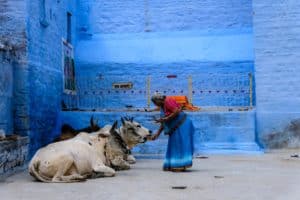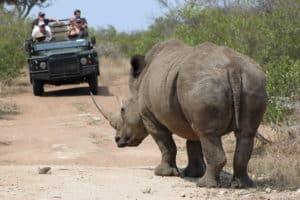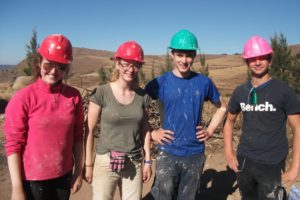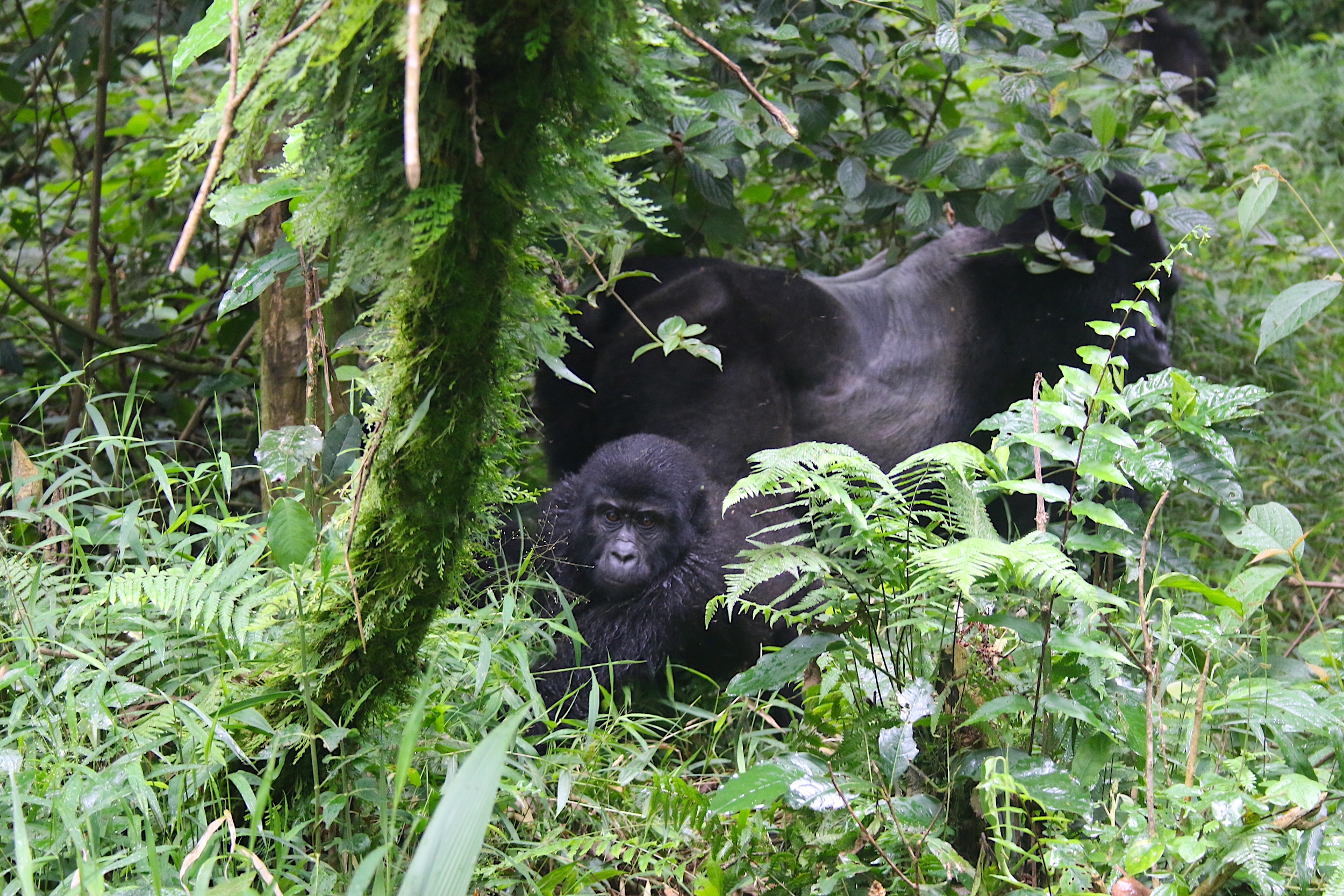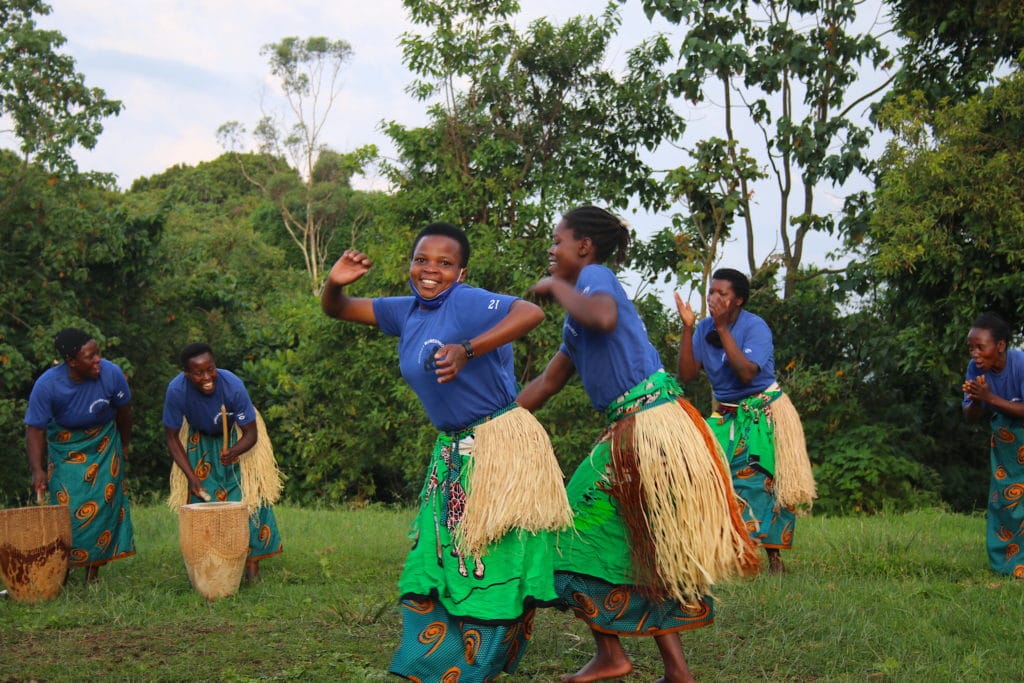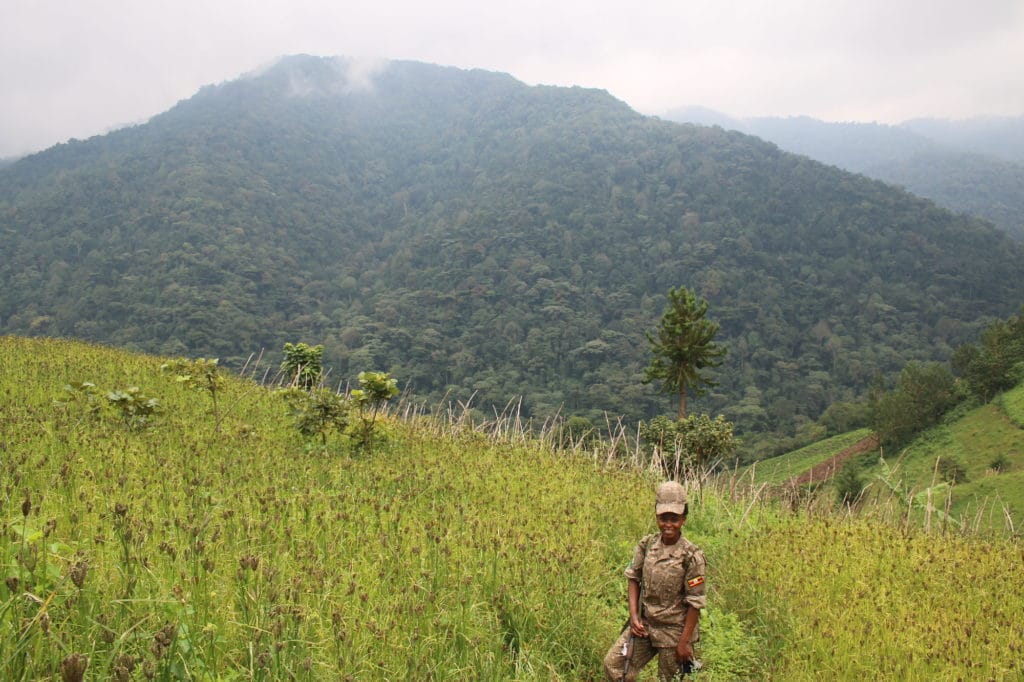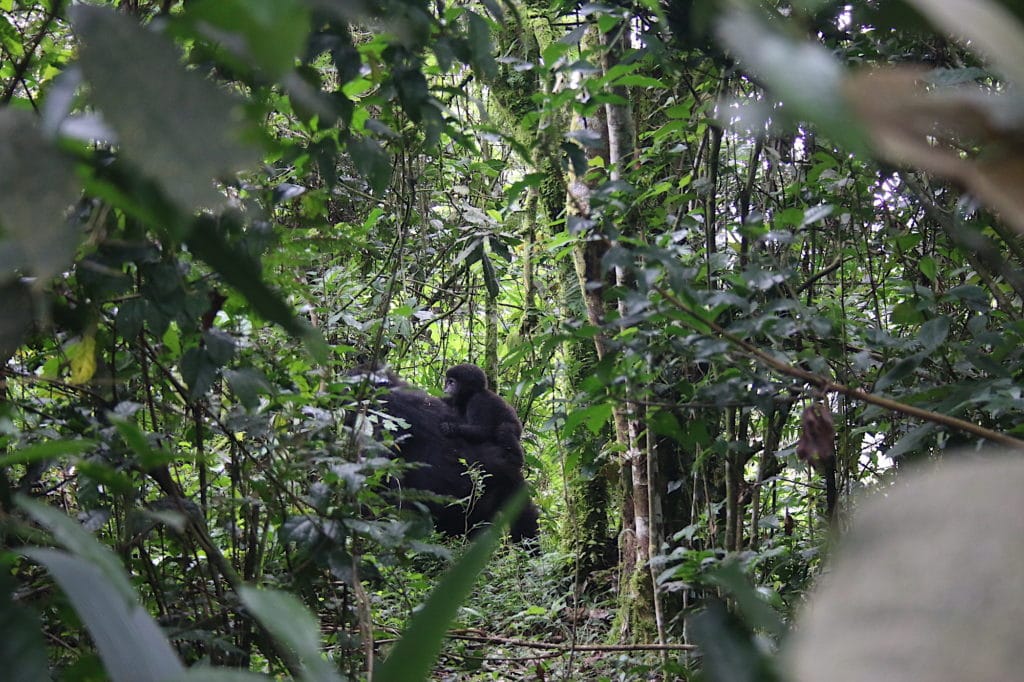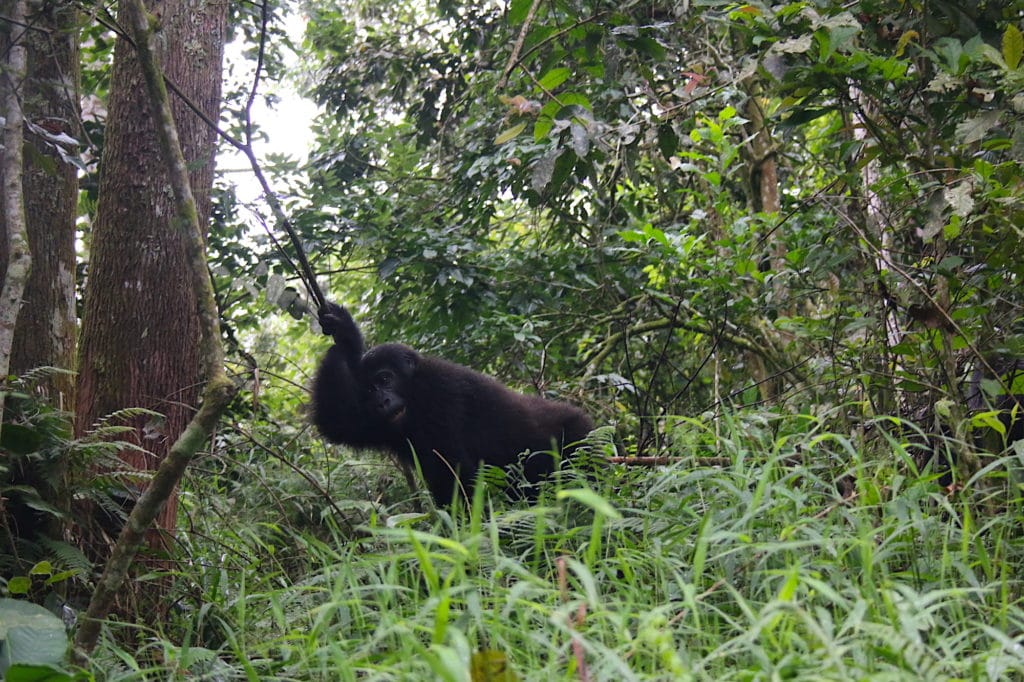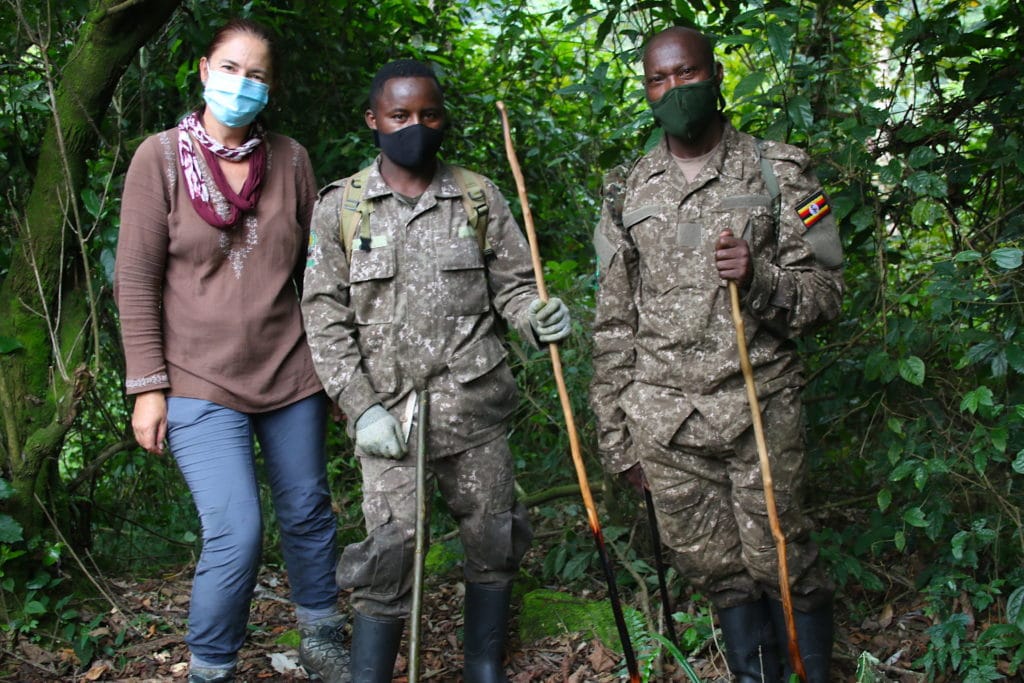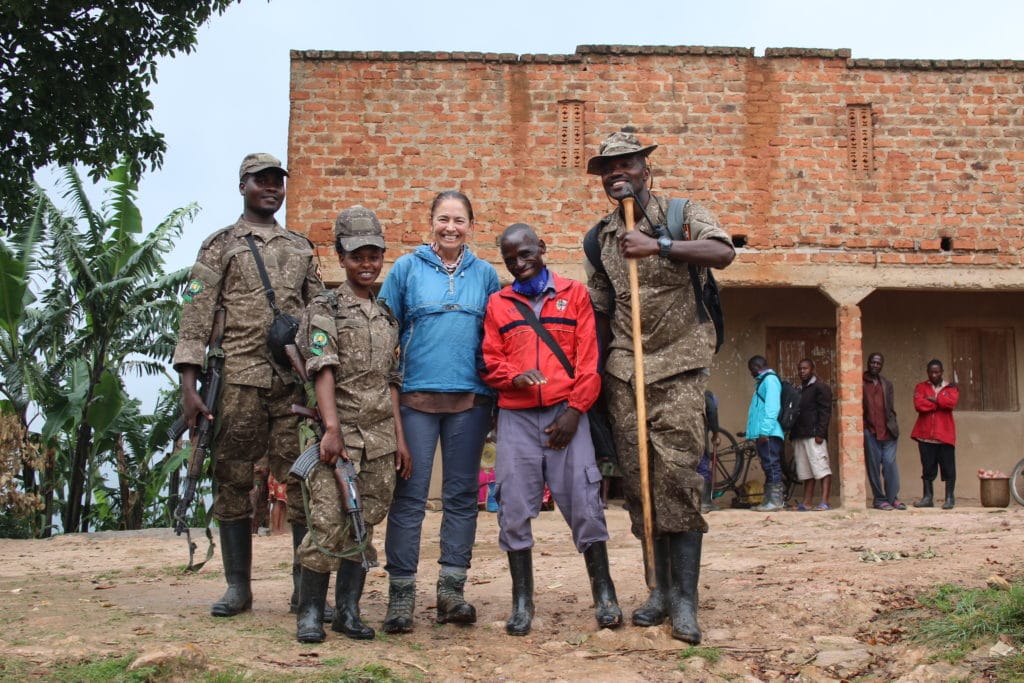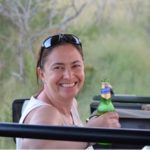Tracking Gorillas: Recently I’ve had the privilege of tracking gorillas in Uganda. Seeing them in the wild is a treasured experience and it is one that I will never forget. Here’s what I learned from my time in Bwindi National Park.
What you Need to Know about the Gorillas of Bwindi
Gorillas are critically endangered and only found in two small populations: in the Virunga Volcanoes of Rwanda, Uganda and Democratic Republic of Congo and in Bwindi Impenetrable National Park solely in Uganda.
Bwindi Impenetrable National Park is a fantastic place for tracking gorillas, and as of 2020, hosts 459 of the 1063 gorillas in the world. An ancient forest in the southwest of Uganda, Bwindi has been weaving itself into tangles for 25,000 years. Bwindi is extraordinarily biodiverse. In addition to the rare and unforgettable mountain gorilla, the forest boasts 350 bird species, 310 butterfly species, 200 tree species, 51 reptile species and 120 mammal species.
There are 17 families of habituated gorillas in Bwindi, all with different characters, family size and also varied ranges. There are four start points to access the gorillas, all official park entrances where you have your initial briefing before setting out. Each start point has access to particular families. Buhoma in the northwest of the park has three families, Ruhija in the east has three, Rushaga in the south has six and Nkuringo in the southwest has three. Family ranges slightly overlap although not often seen together.
I was starting in Nkuringo, although I was staying near to Rushaga. It was complicated but it was all to do with the permits.
Getting a Gorilla Permit
I was excited to see Bwindi for myself, but things quickly got complicated. I was starting in Nkuringo, although I was staying near to Rushaga. It was all to do with the permits.
Gorilla permits are expensive (US$700) and sometimes hard to get hold. They are like gold dust. Your permit is only for one of the assigned start points and each gorilla family has a maximum of 8 permits available. I was told that often film crews will come in and block book all permits for 2 weeks from a certain start point or even researchers may take them for a week. So, it can be a scramble to get a permit, especially at the last minute.
This was the reason why I had an hour journey to my start point at Nkuringo, although I was 5 mins away from the Rushaga start point. There were no permits available at Rushaga. I could have stayed nearer to Nkuringo but the wonderful mid-range lodges are not found there, which is the type of accommodation I wanted to stay in.
An Early Morning Start – Tracking Gorillas
I was awake at 5 am, no alarm needed as I was really excited about the day. Breakfast at 6 am and then we were off. We left half an hour spare so there was no rush at the tracking reception. I have to admit I thought we would be getting up really early and walking at dawn, I hadn’t done my homework about gorillas. Gorillas leave their nests in the morning to look for food, so there was no point being there when they were still in bed, the best time to see them is when they are feeding.
The drive was spectacular with the clouds nestling in the steep valleys and we drove by precariously built terraces of maize, beans and potatoes and houses perched on hillsides looking as if they would slide off. It was magical. We arrived at the reception area, and I handed in my passport for verification, visited the rest rooms and waited for others to arrive.
I then heard the beat of drums and Frank, my brilliant driver/guide, directed me around the hedge saying that they were waiting for me.
Dancing with the Gorilla Women Project
I was there to meet members of The Gorilla Women Project, located in the southern Nkuringo. These women support, train and educate other local and less informed women in sustainable development. This could be in the form of basket weaving demonstrations, traditional pedal sewing making bags, napkins etc and also gardening projects, it is all created around the needs of the women.
They dance for those about to embark on gorilla tracking, wishing you luck to see the gorillas whilst thanking you for visiting. It is enchanting and genuine, the smiles on their faces said it all. I was aware that I was the only visitor there and was forcibly encouraged to join in with the dancing, with much laughter (not so much from me). As I was the only one, I am sure I stood out with my lack of rhythm!
Choosing a family to track
After watching and participating in the dancing, I was ushered into a room for a briefing about the hike. It was then confirmed, I was the only one there for the day. To be honest I had mixed feelings about this, I was delighted that it was just me and so so sad that there were not more tourists providing income and support for the gorillas and the community.
If there had been more people, we would have been evenly allocated to the gorilla families and gone off on our separate groups, but I was a group of one. As there are three families at Nkuringo I could have my pick. Well, Emmanuel my guide did. He chose the Bushaho Group which has 11 members and one silverback. The Nkuringo group does not have a silverback in its group, last year it was killed by poachers, and the Christmas group only has 6 individuals. Emmanuel had chosen wisely for me.
Tracking gorillas
And then we were off. We drove a bit of the way as Emmanuel had got in touch with the trackers and they were already with them, so that was great news. Sometimes it takes a while for the trackers to find the gorillas, so my luck was in. After about 10 mins on a very bumpy track, where we were all given “an African massage” we got to the best point to start our hiking.
In the group there was Emmanual, who was my guide, and two armed guards, Elias and Gloria. I was told not to worry about the guns, to not be frightened. It transpired it was in case we came across other wildlife, such as elephants, who may not take too kindly to us being in their territory, and the guards were there to shoot over the heads of these animals. I was told to simply not run. I am sure that this is easier said than done.
Hiring Hands
We also had an addition of a porter called Brian. Brian is a Batwa, or a pygmy, and I had hired him to carry my pack. My pack had water, my packed lunch, camera, binoculars and other minor bits and bobs. I thought that I would be more than capable to carry my own pack, but after 20 mins I was glad that I wasn’t.
In my mind I thought we would be going uphill first, wrong, there was a steep decline into the valley. I had to really concentrate on not falling over as we followed a muddy single track that weaved its way down the hillside. Crossing stream and walking through climbing bean crops it became apparent that I really was walking into the wilds. Ahead I faced the steep and Impenetrable Bwindi. It was both inspiring and daunting. How long would it take to get to the gorillas?
Gorillas Hate tea
I loved the way things in Bwindi were thought through. A buffer zone has been created between the village crops and the park, the buffer zone being tea plantations. Apparently, gorillas do not like tea, so creating this area of tea discourages the gorillas from entering the crops of climbing beans and potatoes, genius. The tea plantation was relatively easy walking although it was rather steep, and we had to weave in and out of the rows to find a stable footing.
Then we entered into the secondary forest. This particular family of gorillas liked this the most because it had lots of tasty things to eat. Gorillas eat 99% vegetation and 1% ants and termites. They are practically vegetarian, unlike chimpanzees.
The machetes then came out as we forged our way into this very thick and dense understorey. It was very hard going when simply walking, cutting the trail as well must have been even harder. Emmanuel called out “whooohoo” which was responded by the trackers already on the ground. We had direction and the trail was altered. We forged further into the bush, crossed a river and met up with Samson and Zizzy, our helpful trackers.
The gorillas were nearby. Into the bush we went, dodging thorns, stinging leaves, biting ants and lianas that seemed to tangle around my legs on a regular basis. I also had to climb over all the branches that Samson and Zizzy had cut down, avoiding the sharp points of cutdown vegetation.
I was then told to drink enough water for an hour – you are not allowed to eat or drink anything when watching gorillas. After a large gulp of water, we left Brian and Gloria and ploughed into the vegetation.
Gorilla Watching – Tracking Gorillas
I didn’t think I would be emotional when I saw gorillas for the first time, but it was. Although initially I was scared witless as the silverback charged us, just to show us who was boss. I had been briefed not to run but facing a huge demonstrating gorilla it can be hard to ignore that flight response. Luckily Samson was cleverly blocking my way, with a steady hand, and I had to stay put! Emmanuel shouted at him, and he stopped and sauntered off. That was heart in mouth stuff.
We were in a very dense thicket, and it was hard to see them, so there was a lot of manoeuvring me to see them properly and get the right photo. To begin with I was in awe, I simply stared and watched.
There were a couple of young ones playing, one riding on top of its Mum, an older one in the tree and the, much calmer, silverback eating his breakfast, whilst keeping a watchful eye on us.
An hour with the Gorillas
It is the luck of the draw as to where you see them. You are only allowed an hour with the gorillas, so you need to make the most of it. We were in very dense bush so it was hard to see them and it was also very overcast. But I did not care, simply being there was humbling and exhilarating. The gorillas went deeper into the aptly named Impenetrable forest, and we duly followed.
There was one more charge by the silverback, this time Zizzy was there saying calmly “Do not run, do not run” as I was turning away looking to blunder through the bush. Apparently the silverback didn’t like us being where we were as we walking through his food! I can relate to that.
Time was up and we had to leave. I said goodbye to the very kind and solid Samson and Zizzy, they would stay with the gorillas so that people coming to see them the following day would have a good chance of a sighting.
All these was to do now was to climb back up our precipitous route and back to the road. It had been a 4 hour round trip, which is a pretty quick one. Often people spend longer tracking gorillas. if you are in a larger group, bigger than one(!), it can take even longer to manage everyone to and from the gorillas.
As we walked out, it began to rain. In Uganda it is considered a blessing on whatever you are doing when it rains. Seeing gorillas was certainly a blessing.
I highly recommend this experience; it will stay with me forever.
